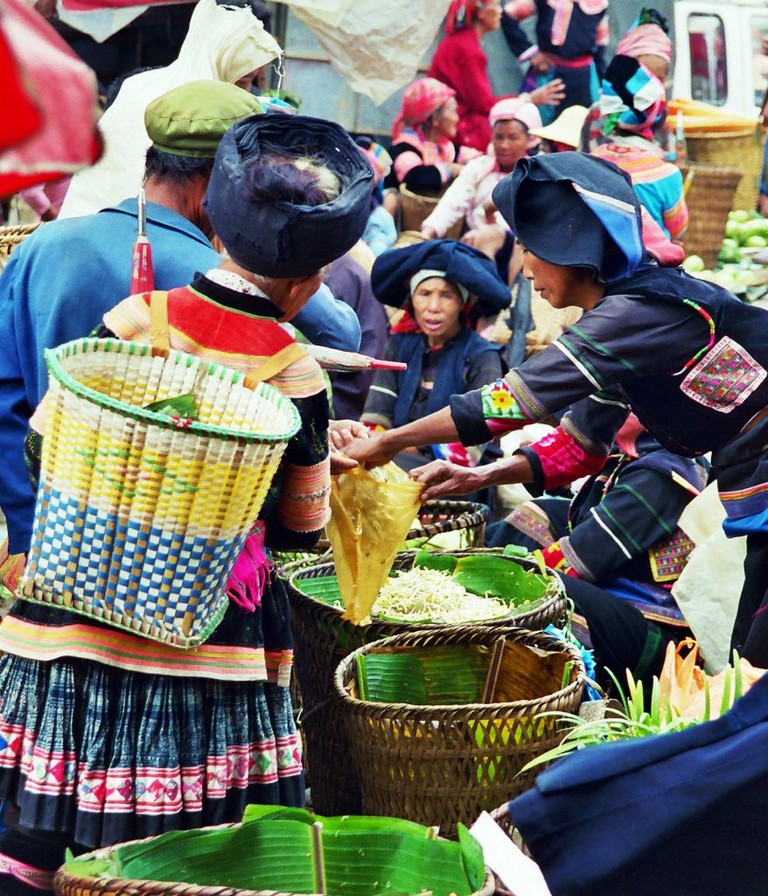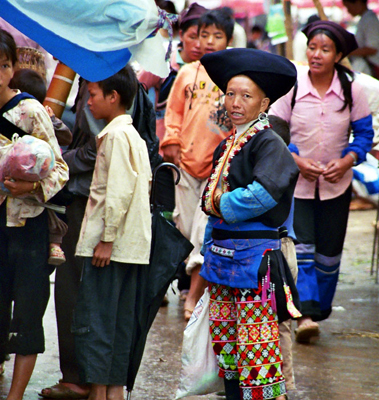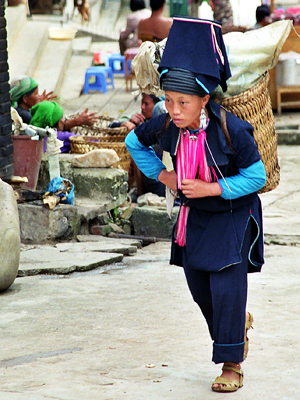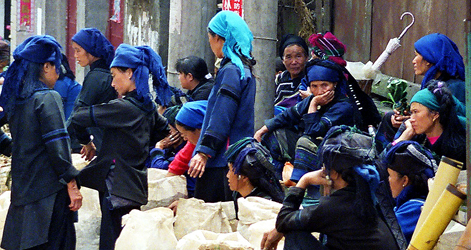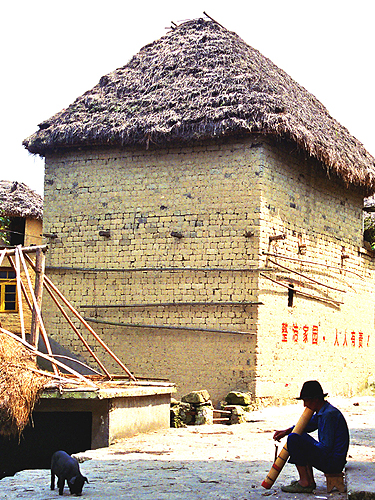Laomeng Sunday Market 老勐 市场 Jinping Yunnan: Five minorities at One Market
Click here to see the photo video with music: https://youtu.be/H0NaaHfpLaA
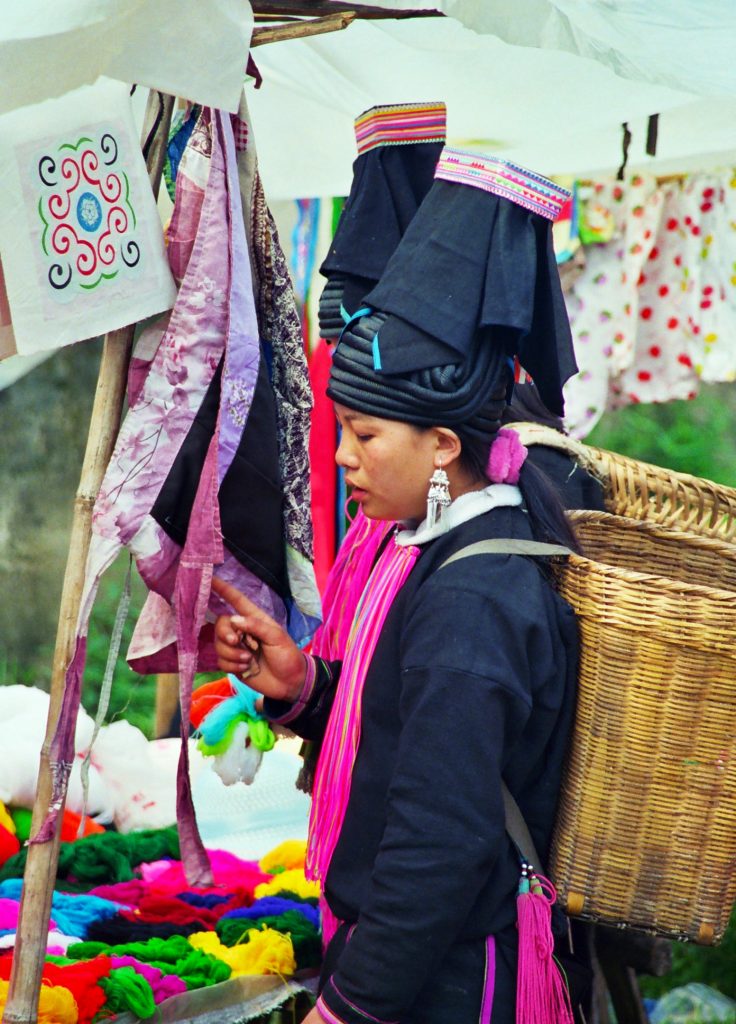
(Yunnan Province)
Five minorities at One Market
Laomeng Sunday Market, five minorities at One Market, that is what we were promised. The hotel owner in Yuanyang had told us to get there early, as many of the hill tribe people have to walk all the way back and the market starts breaking up at around noon.
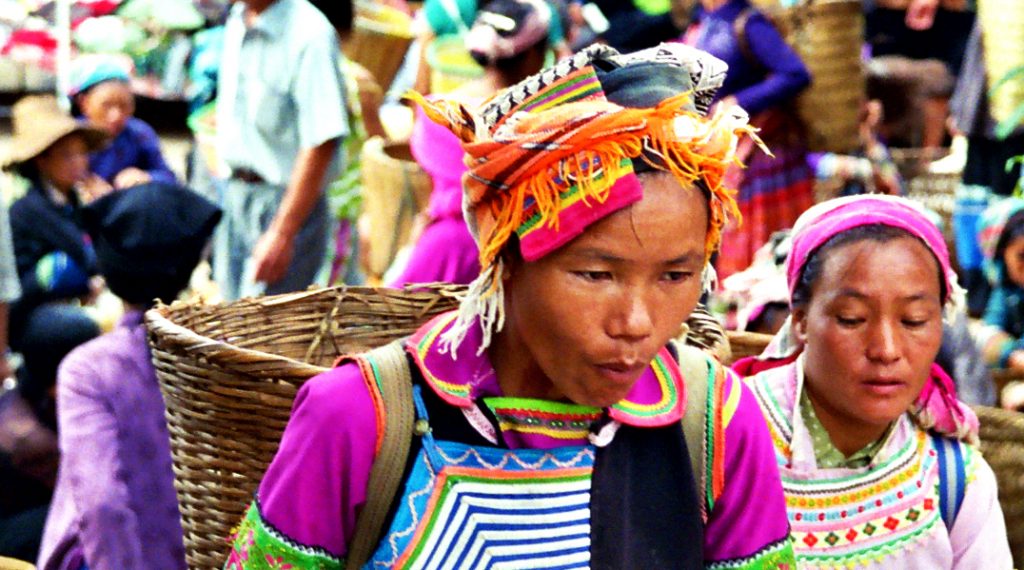
Laomeng Sunday Market: Arrival
So we got to Laomeng at about 8.30, where we were among the first to arrive. We walked once round the town and had a look at the few stalls already set up by a small number of colourfully dressed Miao ladies and some older Yi women.
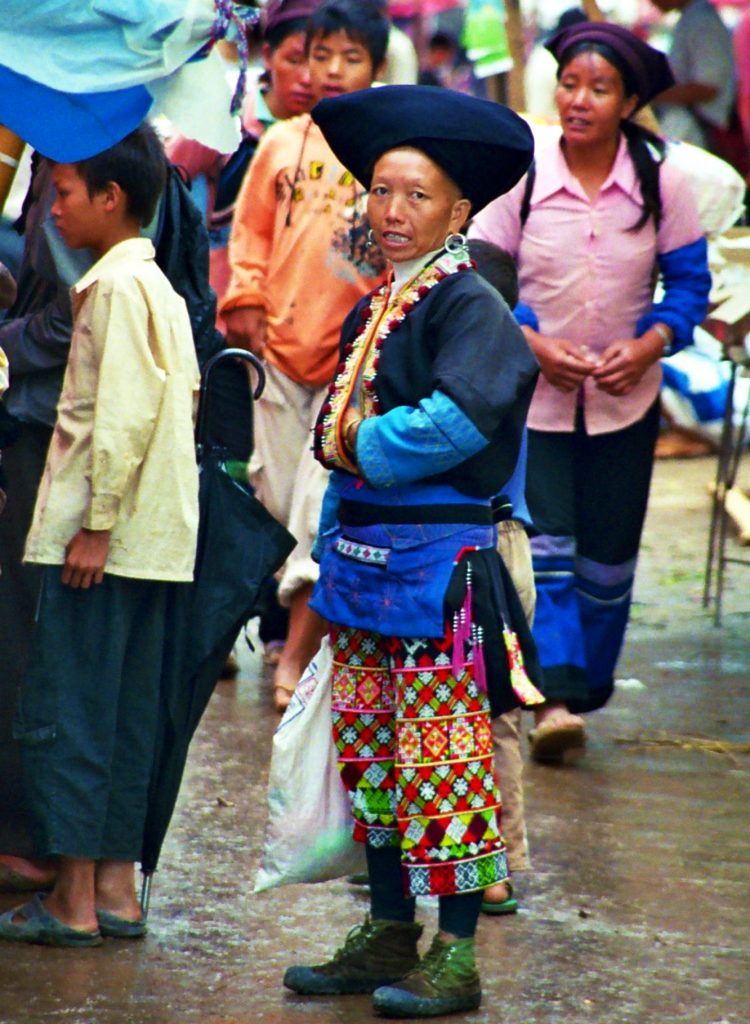
Most of them seemed as curious about us, as we were about them. By the time we got back to our starting point, dozens of vans, carts and other vehicles had already arrived, unloading hundreds of passengers and all kinds of goods.
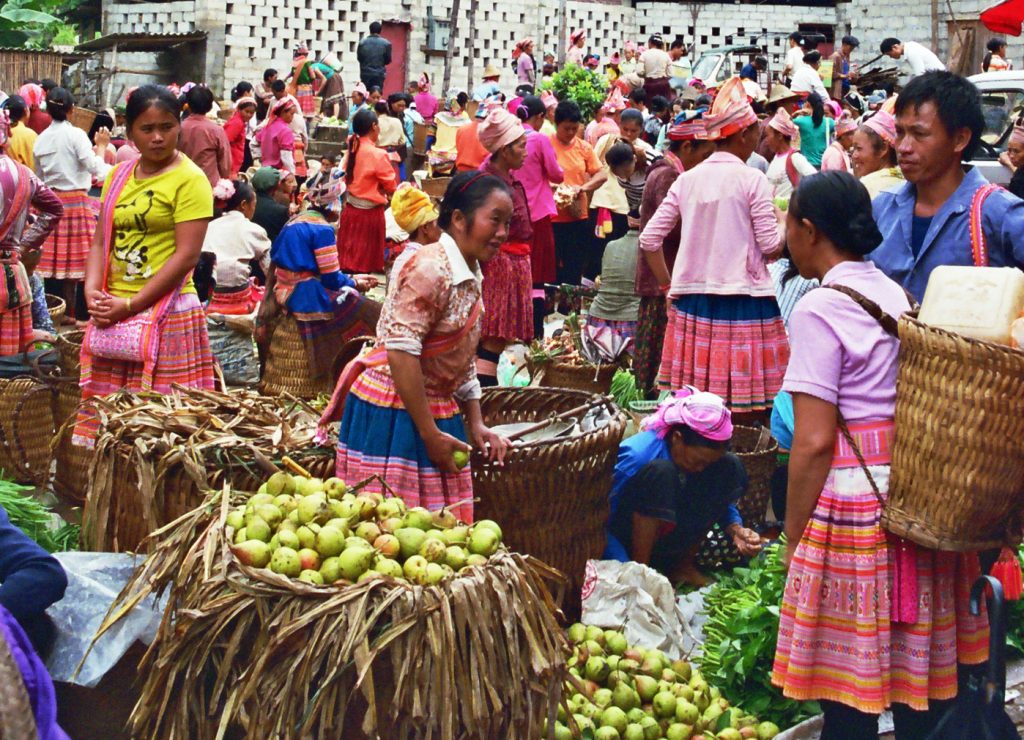
They brought with them a kaleidoscopic mix of colours, as ladies from the Hani, Yao, Yi, Miao and Black Thai ethnic groups spilled out from the back and descended upon the market for a few hours of frenzied buying and selling.

For the next 3 hours we were treated to a visual feast that left us drained and out of film. Our driver had filled us in on some of the intricacies of the local costumes, so we were more or less able to distinguish between the women from the different ethnic groups. However, The men on the other hand were fairly indistinguishable, wearing pretty much the same peasant clothes and large wide-brimmed hats.
The Miao 苗族 at Laomeng Sunday Market
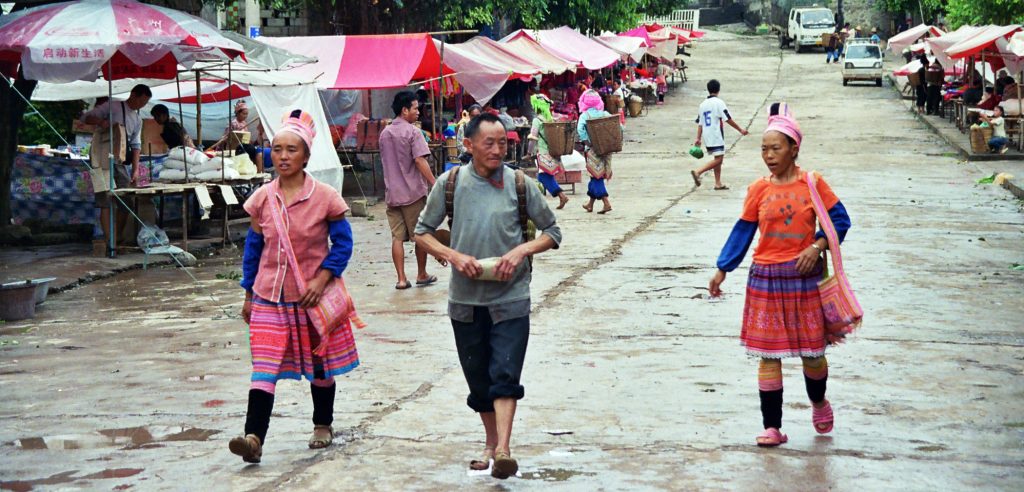
Firstly, the Miao. The most colourful group are the Miao. The women of this ethnic group wear short, pleated skirts in electrifying colours such as bright orange, turquoise, yellow, pink or neon green.
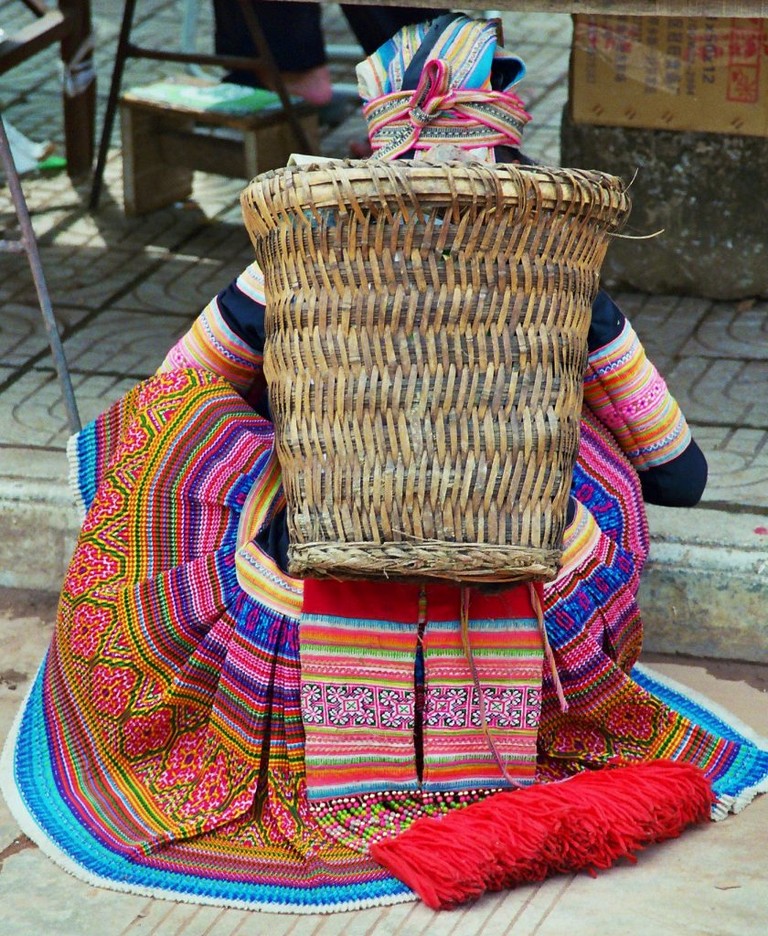
The skirts are held in place by tight, embroidered belts and further embellished by lavishly decorated aprons, worn at the back (to protect their clothes when they are carrying loads, or sitting down on their haunches).
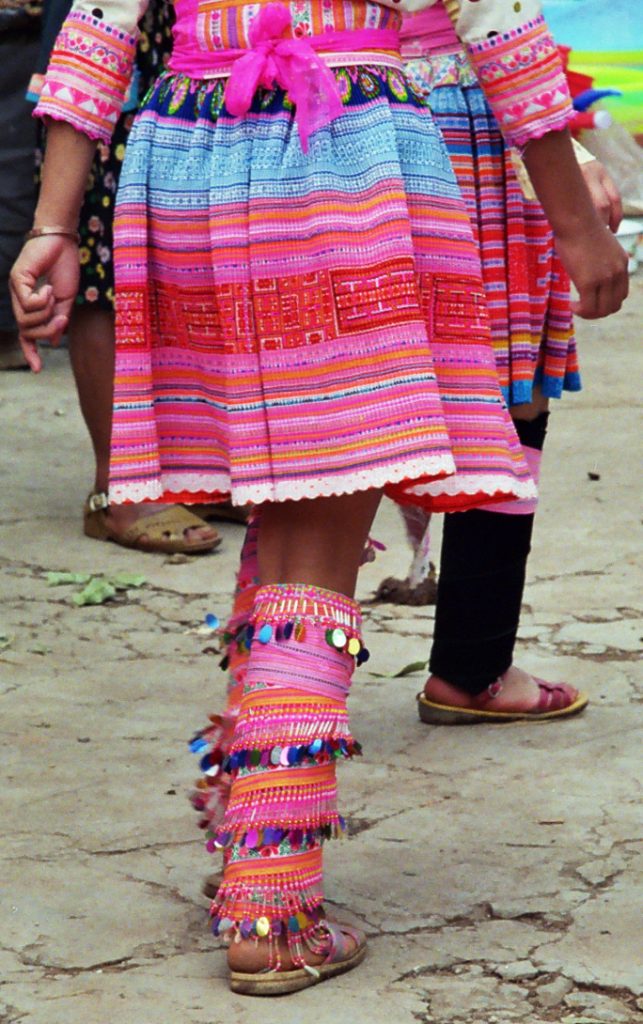
Their lower legs are covered by leggings, usually black, although the trendiest young ladies can wear coloured ones, adorned with dangling pieces of silver, or coins. Their outfits are completed by a final, embroidered strip of cloth, wound around the head as a kind of turban, peaking at the front.
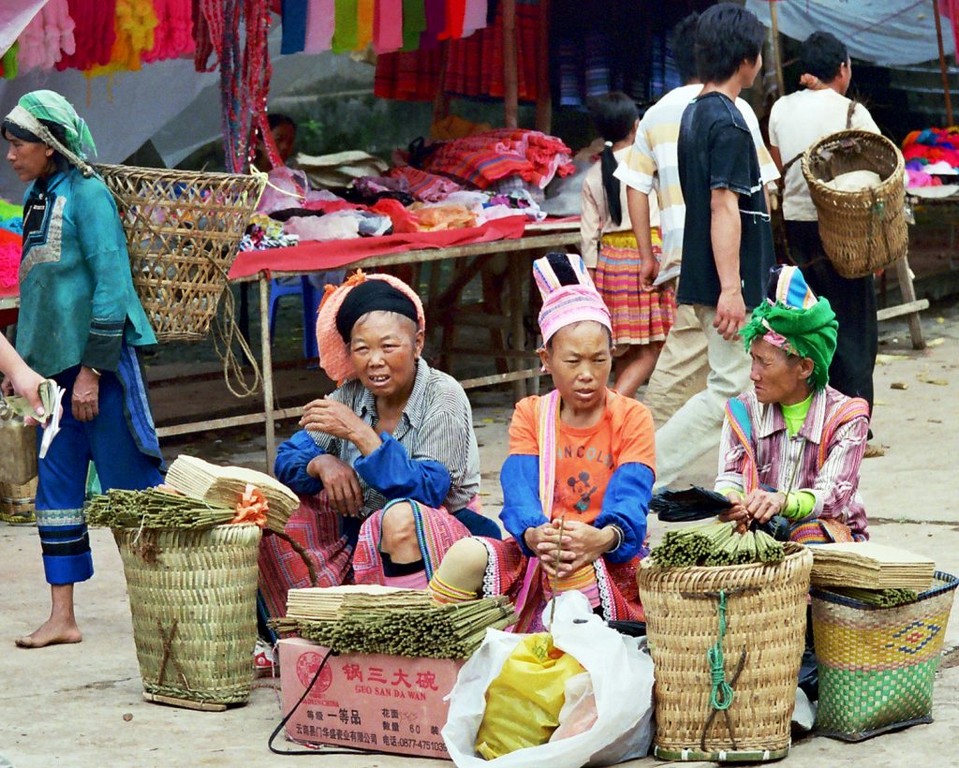
Given the vibrant nature of their attire, it isn’t surprising that their Vietnamese relations are known as the Flower Hmong.
The Yao 瑶族 at Laomeng Sunday Market

Secondly, the Yao. In stark contrast with the Miao, the Yao are probably the most fascinating to look at. Their all-black outfits of loose, flowing tunics and trousers, topped by incredible black boxed hats (resembling a Fez) lend them at once a forbidding and mysterious aspect.
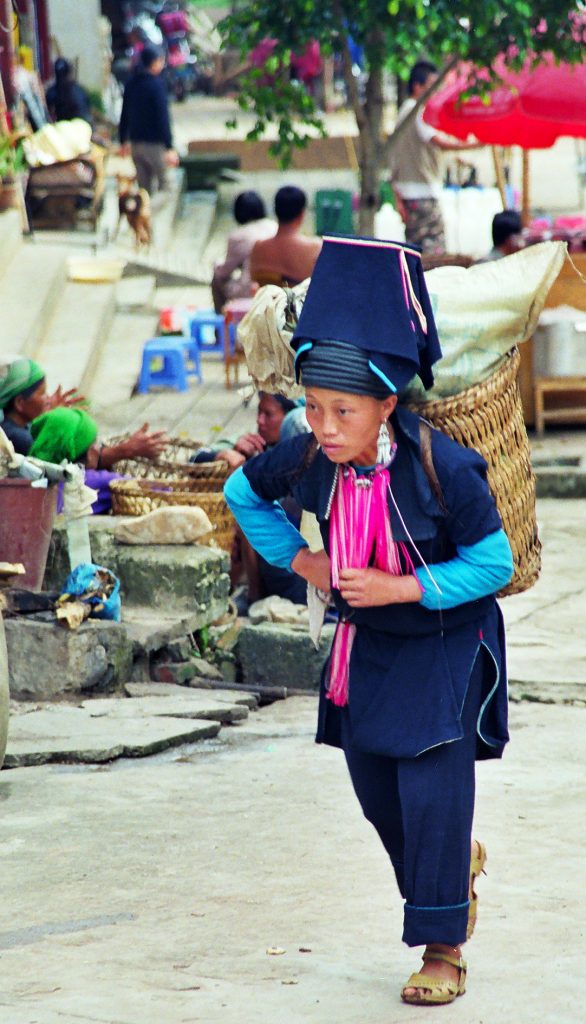
The stern black of their costume is only livened up by tresses of fuchsia coloured wool, pinned to the front of the ladies’ tunics, and the heavy silver earrings and necklaces they wear. The proud Yao ladies stride through the crowds mostly unsmiling and they are reluctant to have their pictures taken.
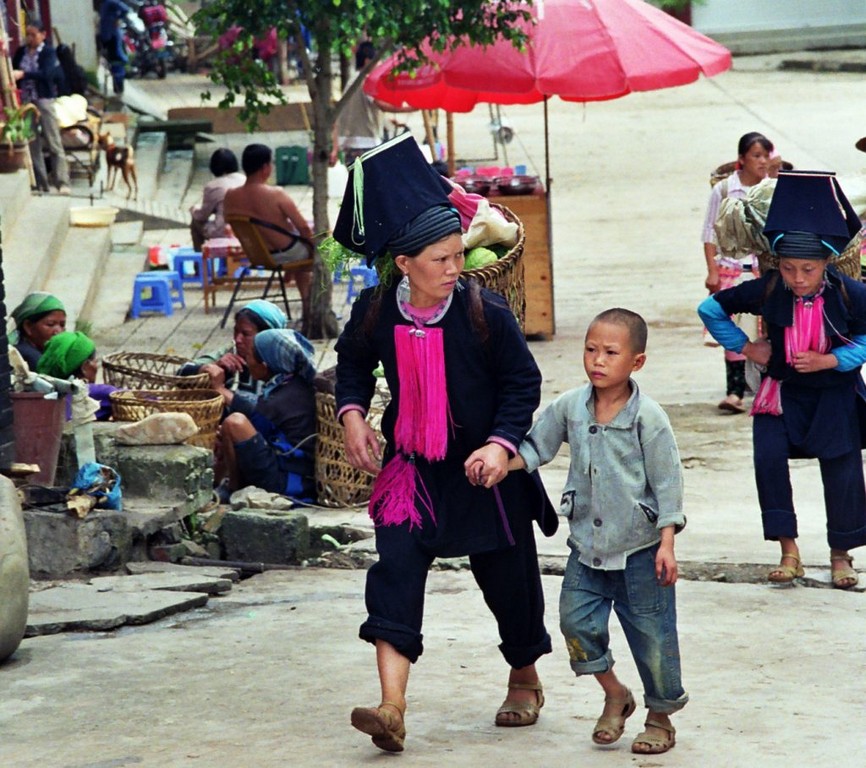
The Hani 哈尼族 at Laomeng Sunday Market
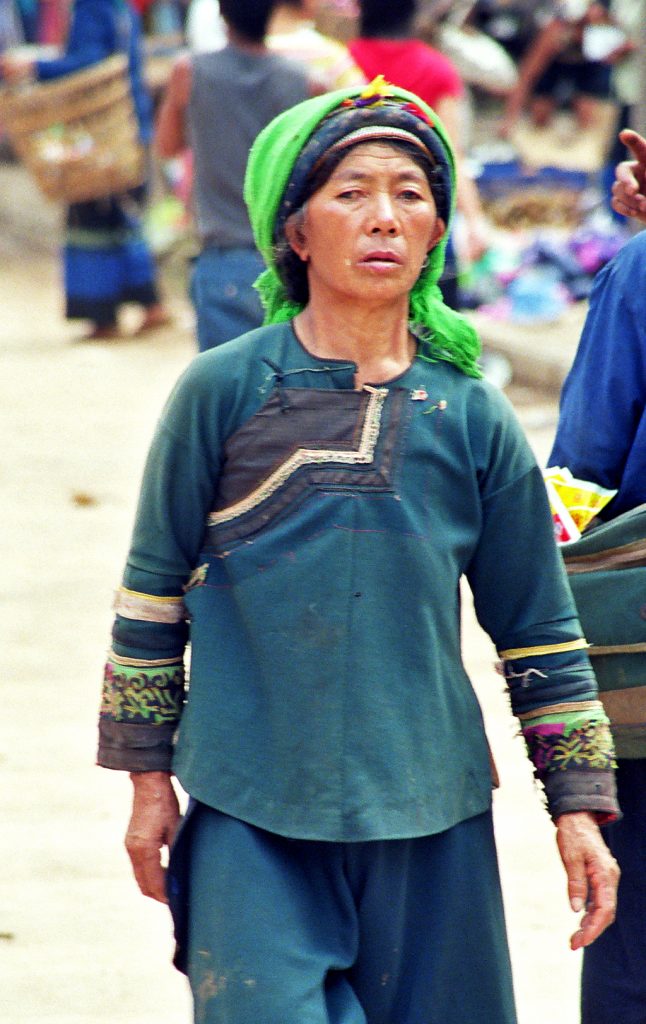
Thirdly, the Hani. Hani women also tend to wear a tunic or jacket over trousers, like the Yao, though their tunics are shorter and tighter. And like the Miao, they wear a protective apron at the back.
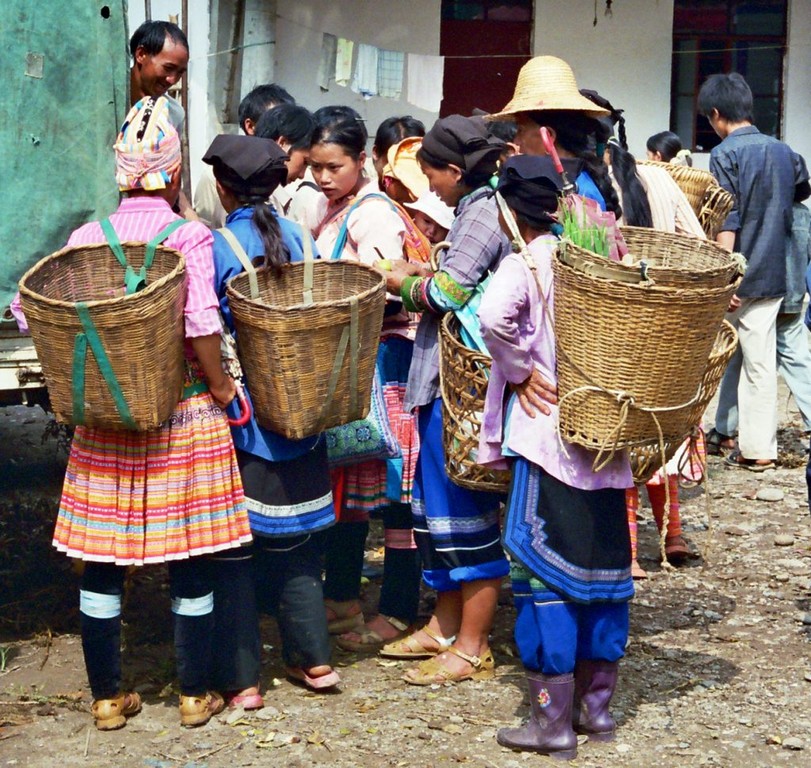
Their colours are subdued, blue and black are the favourites, but some green and petrol- blue can be seen too. If a Hani lady’s headdress is very colourful and decorated, this means that she is single. On the other hand, if her jacket is decorated with silver coins, she is married.
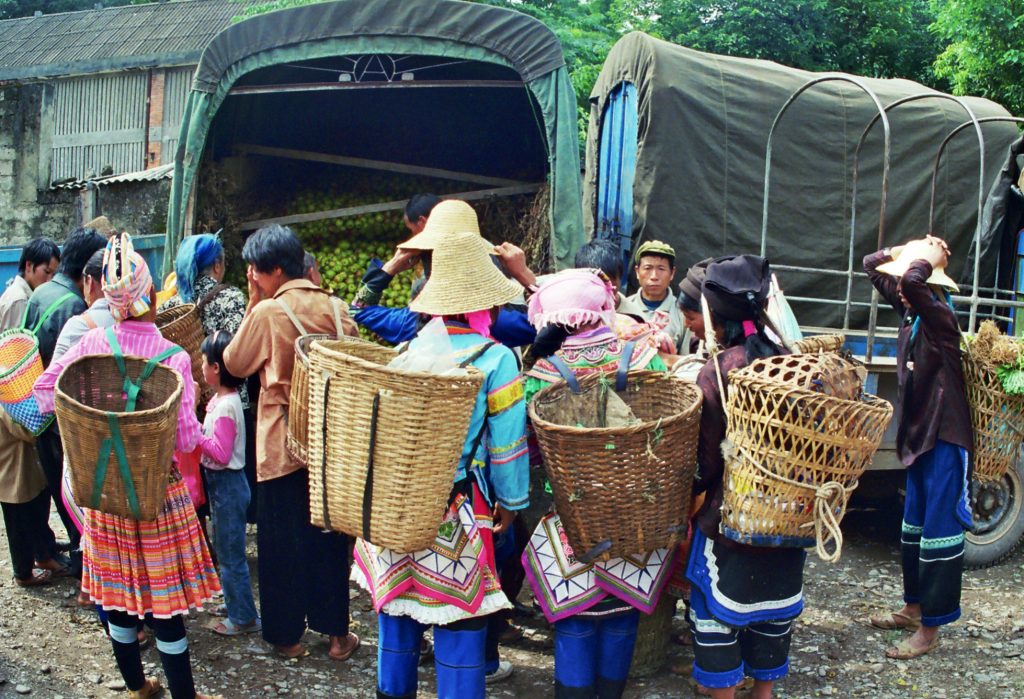
The Yi 彝族 at Laomeng Sunday Market
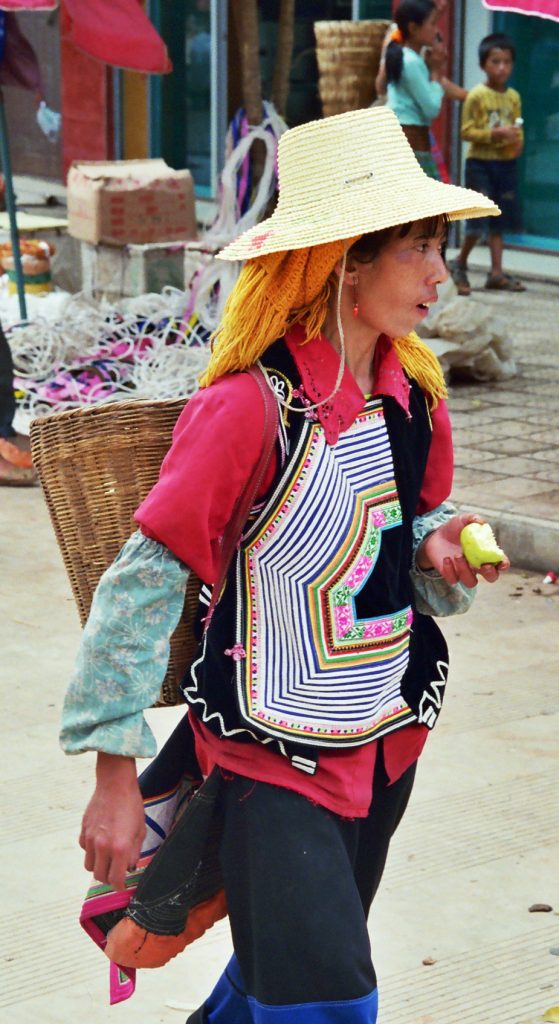
Forth the Yi, The Yi ladies are almost as colourful as the Miao, but they wear trousers, not skirts. On top, they wear brightly coloured jackets, often with short sleeves. The colours can vary, but light blue, pink, yellow and mauve appeared to be all the rage.
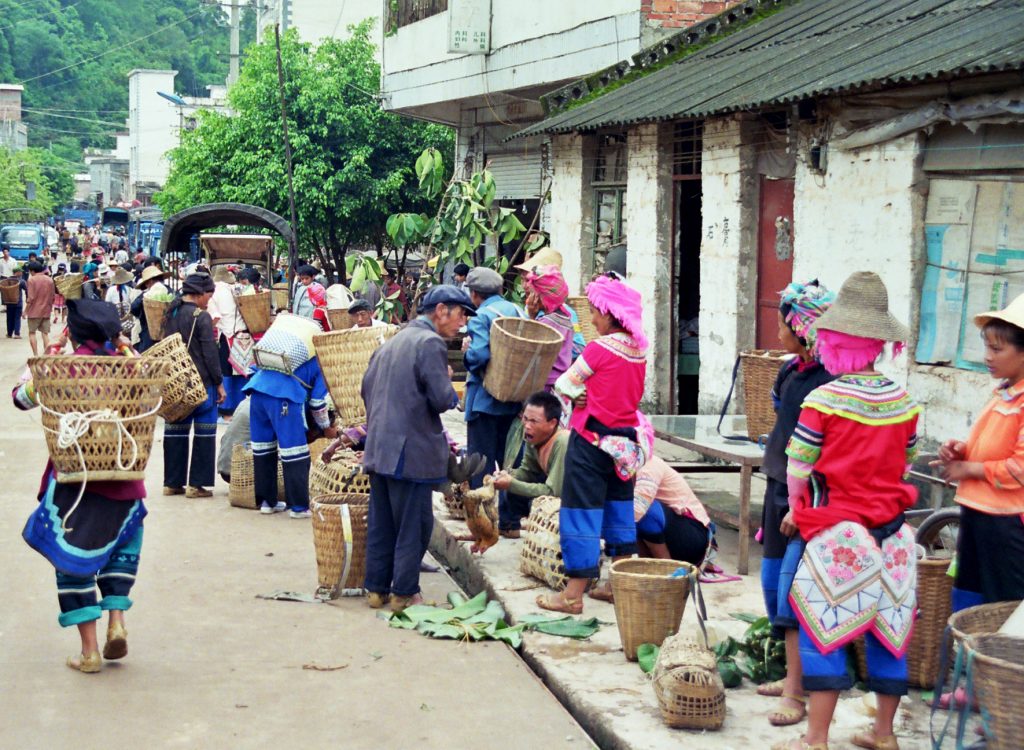
The top part of the jacket is covered with a semi- circle made of embroidered flowers. At the back, instead of an apron, they tend to wear two embroidered lozenge-shaped appendages.
Black Thai 壮族 at Laomeng Sunday Market

Finally, the Black Thai were the least in evidence and dressed very simply in black, as their name suggests. Their ladies wore straight black skirts and short-sleeved blouses.
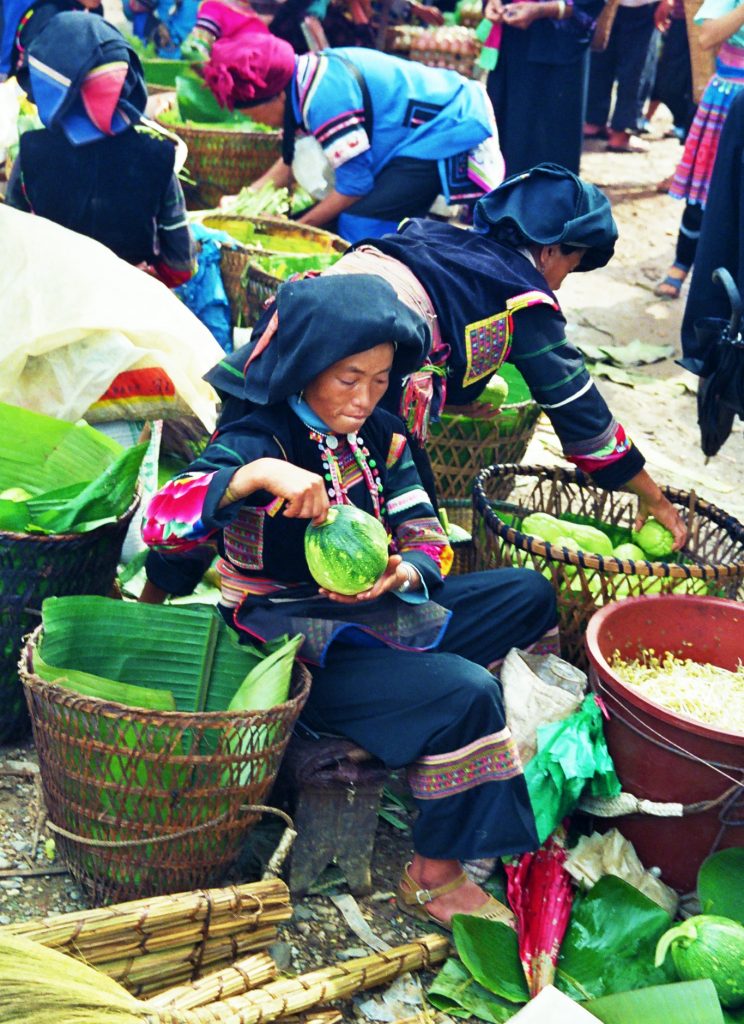
As to location, the market spreads out all over the town, which is small enough to be explored thoroughly in a couple of hours. Like most markets in China, each area or street is dedicated to a different product.
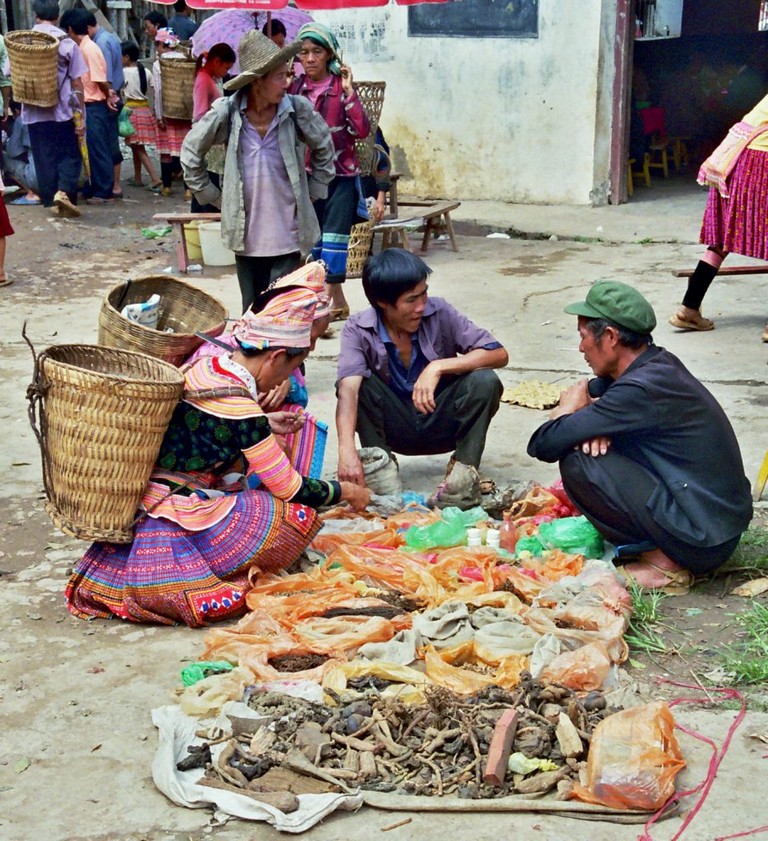
The square given over to vegetables and fruit is one of the highlights, with colourful ethnic women squatting down behind their wares, mostly small piles of exotic-looking vegetables, herbs or spices, spread out on a piece of cloth.

Purchases in this section are usually wrapped up in banana leaves.
Lunch
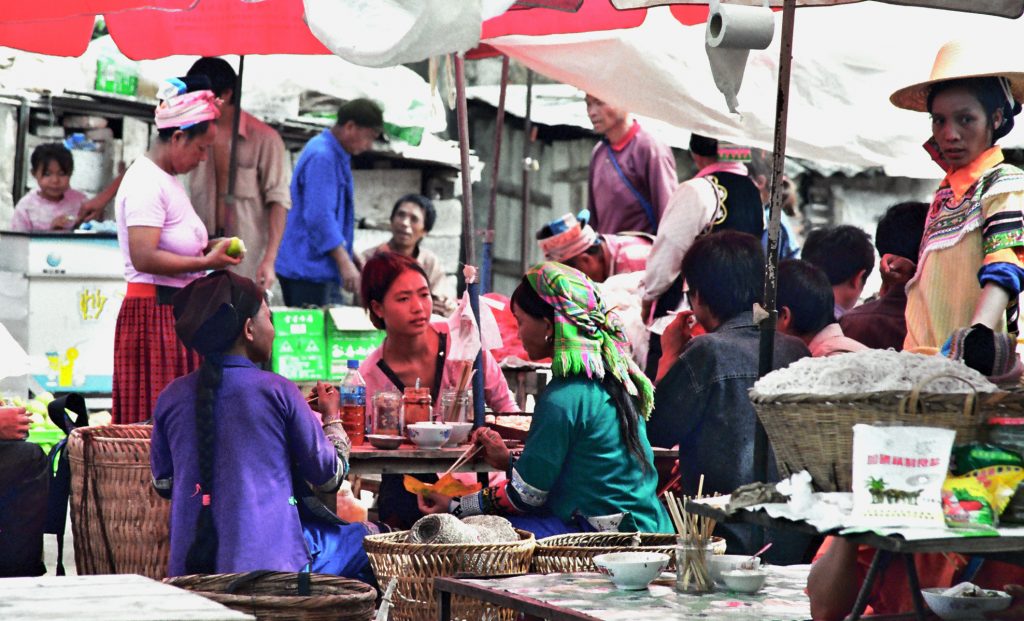
Another, larger square combines meat and simple food stalls with stands selling clothes, cloth, wool and other items necessary for sewing, embroidering or knitting. The latter are particularly popular with the younger ladies.
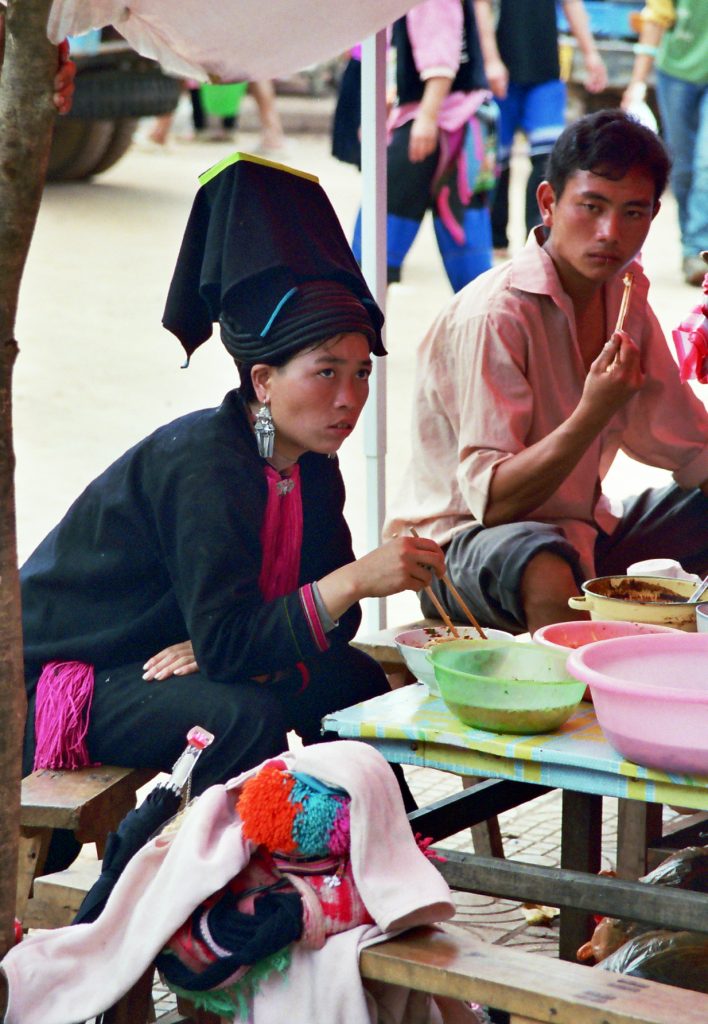
Lunch is a simple affair, with stalls selling noodle dishes with plenty of meat, vegetables and spicies.
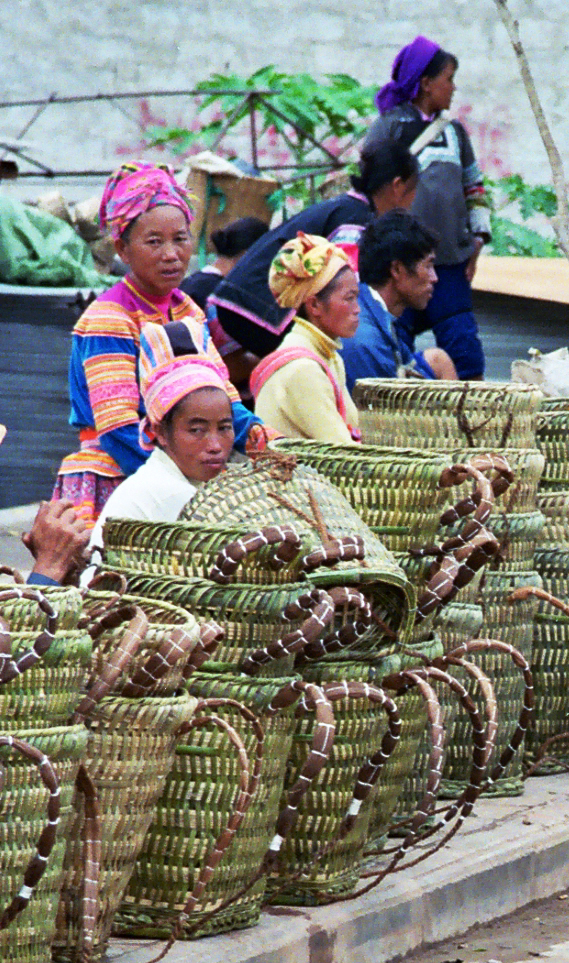
On the outskirts of town, there are corners dedicated to selling chickens, piglets, or watch dogs.
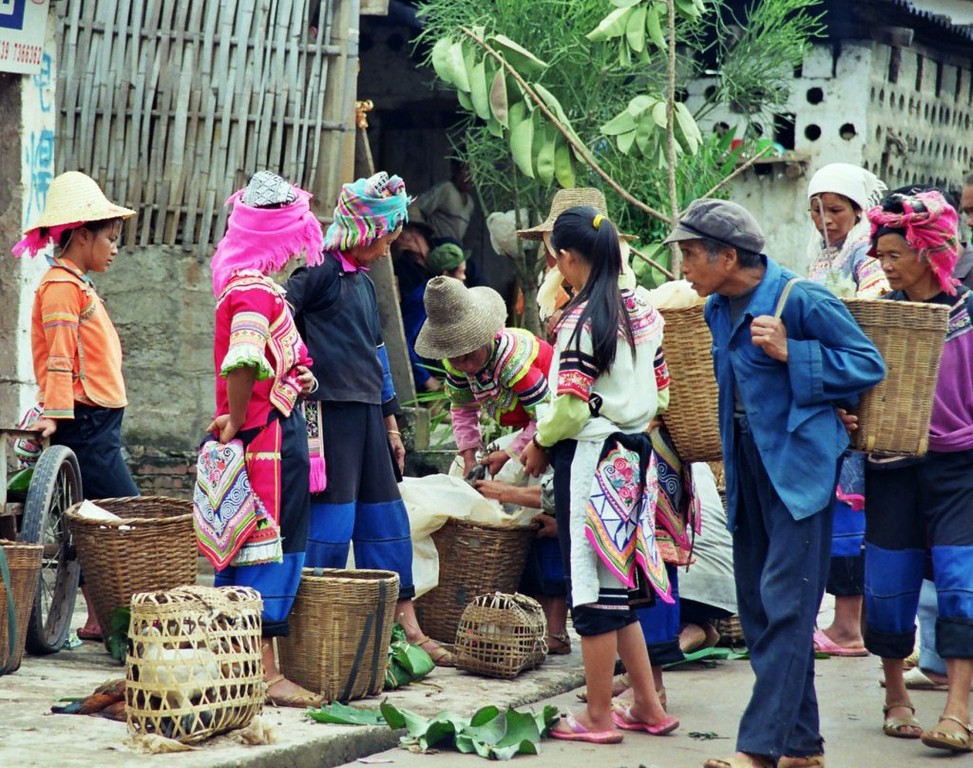
It’s a great place to watch and take photos as well, because once the market is in full swing, nobody will pay much attention to you, even though you may be the only foreigner in town, which is what happened to us.
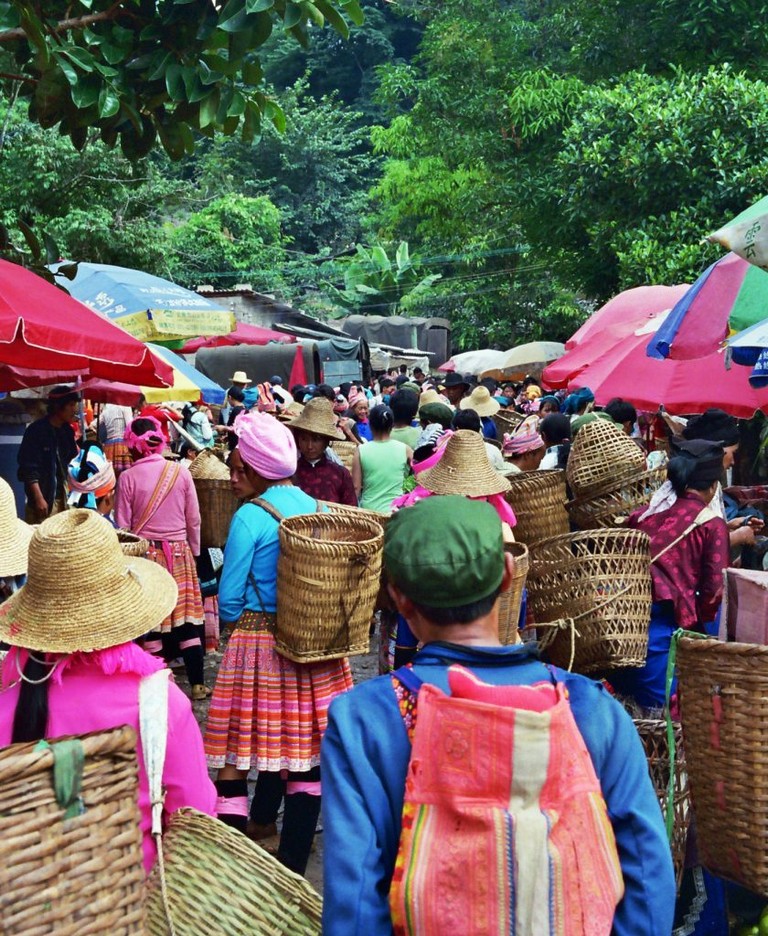
Don’t come to this market looking for souvenirs; there are few things for sale that would interest tourists, which should hopefully keep tour groups away. We had a look at one of the colourful Miao skirts and were a bit taken aback by its price: although it was handmade and weighed a tonne, we thought that 300Yuan was a bit steep.
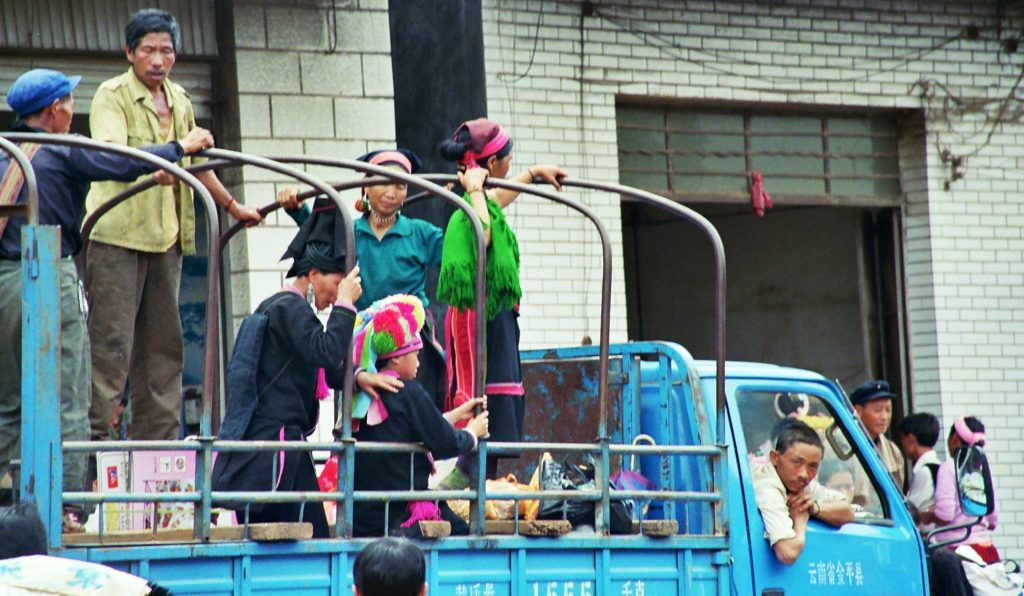
True to our landlord’s prediction, by midday the market began to wind down and the vehicles filled up again with their multi-coloured cargo.
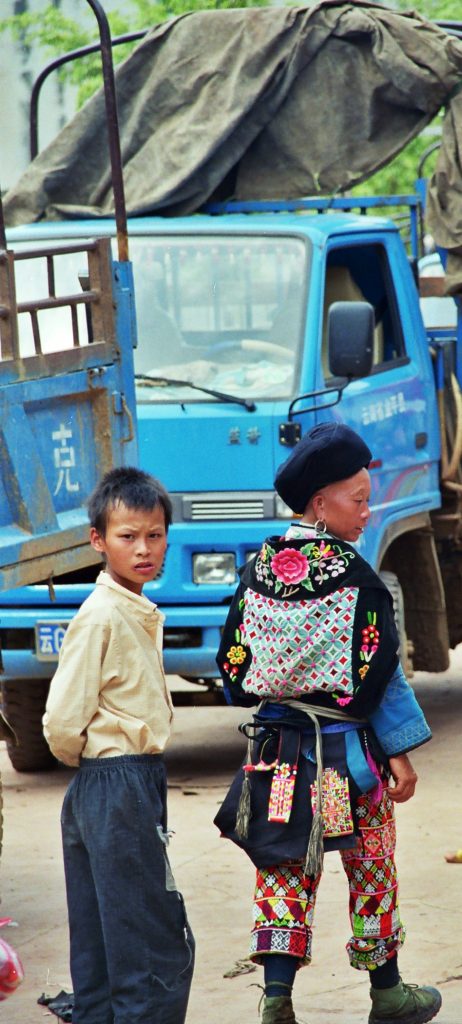
As we were driving away, we could see lines of people heading off into the forest and up the mountain paths, back to their villages.

Practicalities:
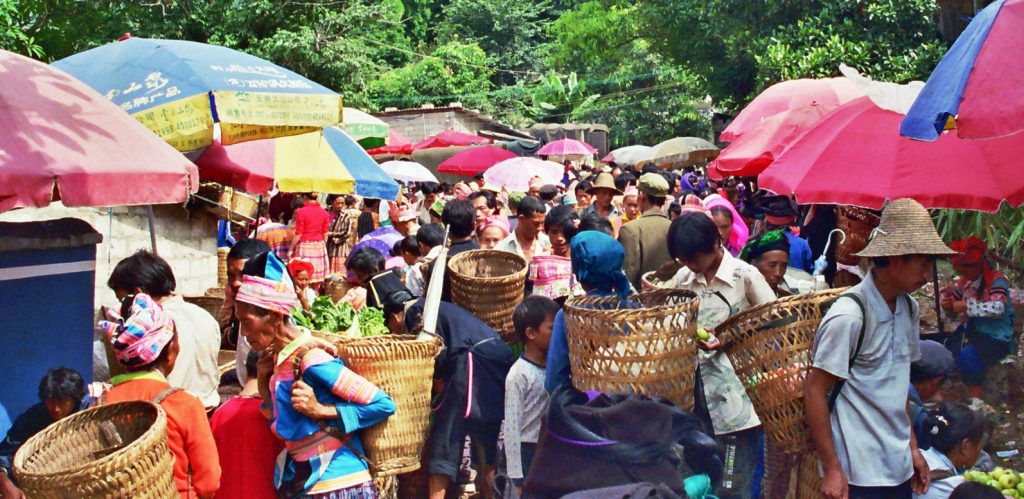
Laomeng is situated in the south of Yunnan, not far from the Vietnamese border. As the town lies in a river valley, the climate is hot and humid and the surrounding countryside is extremely green and fertile, allowing for two rice harvests a year.
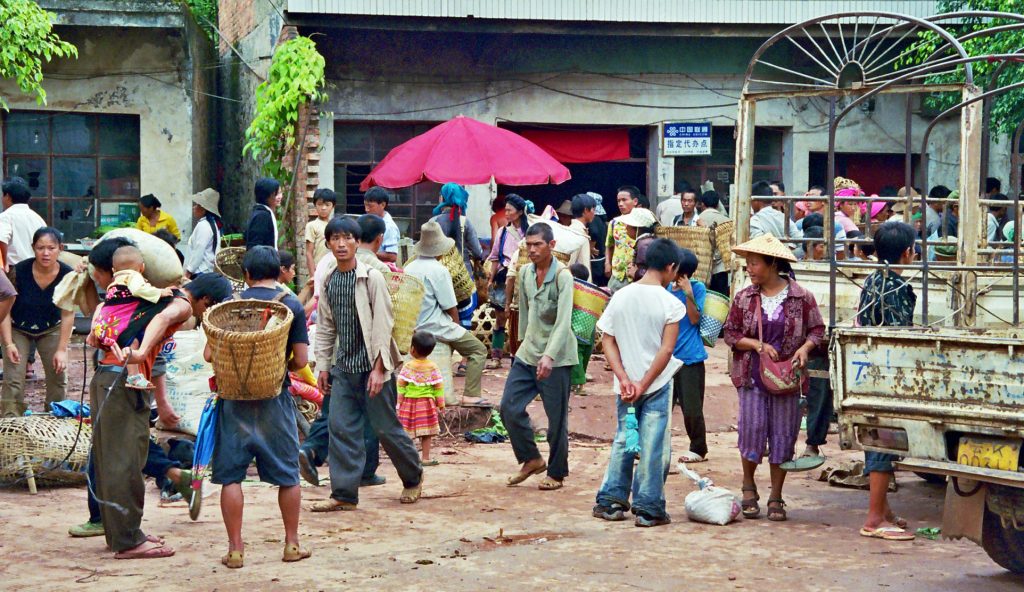
Regarding its ethnic composition, Laomeng straddles two prefectures, Yuanyang and Jinpin. Of these, Yuanyang is home to many Hani and Yi who tend and cultivate the stunning rice terraces the area is famous for, while Jingpin is home to the Miao, Black Thai and Yao.

The first two live low down near the rivers, in the sub-tropical fertile lands, while the Yao dominate the high mountain areas and ridges and therefore the poorer lands.
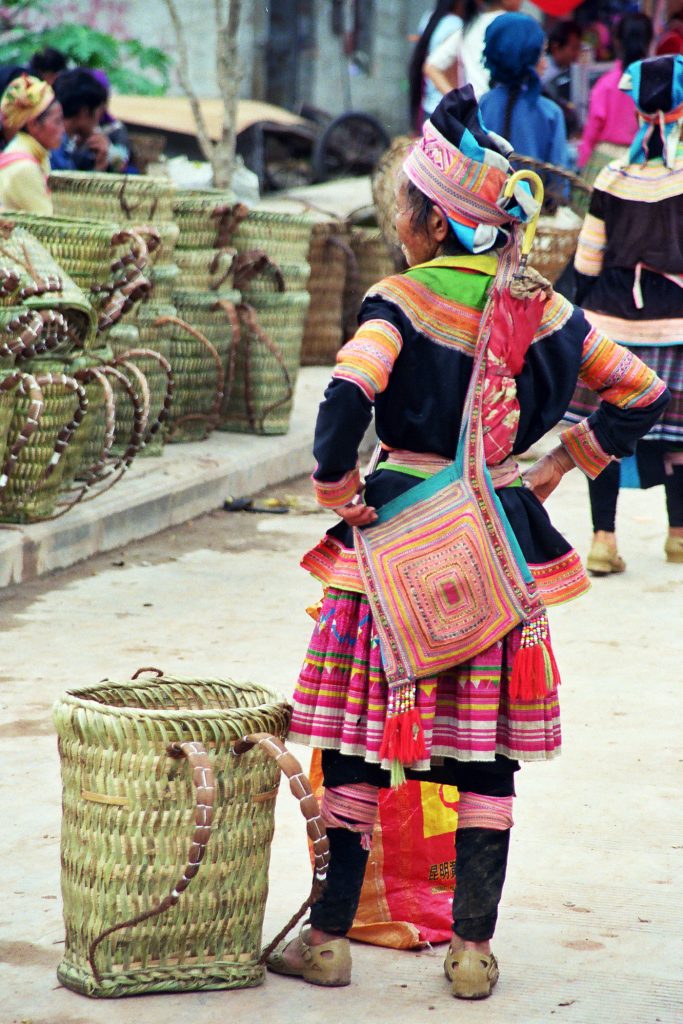
As for Laomeng town, there are a couple of basic hotels, small eateries and shops, but not much more, and the buildings are definitely on the drab side.
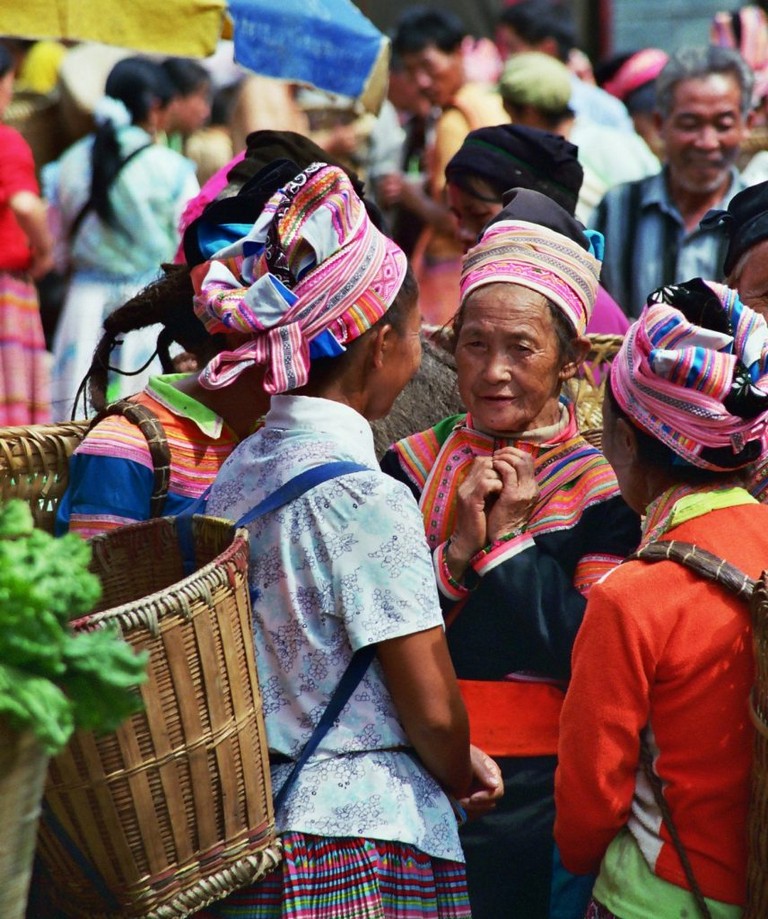
However, the market converts the town into festival of colours and sounds and it would probably make a good base for exploring the area.
Coming and Going:

From Yuanyang there are plenty of mini buses to Laomeng. The journey can take more than 2 hours, depending on how many passengers the bus stops to pick up and drop off.
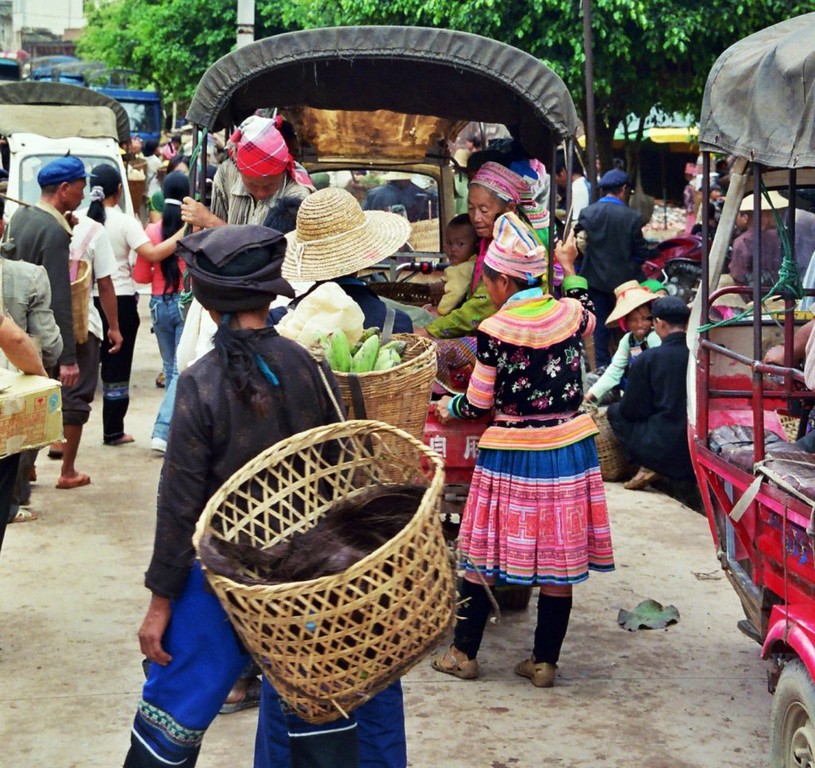
You can hire a minivan for about 150 Yuan to take you to the market and back, including several hours waiting time. Buses from Laomeng also go to Jingpin and surrounding villages.
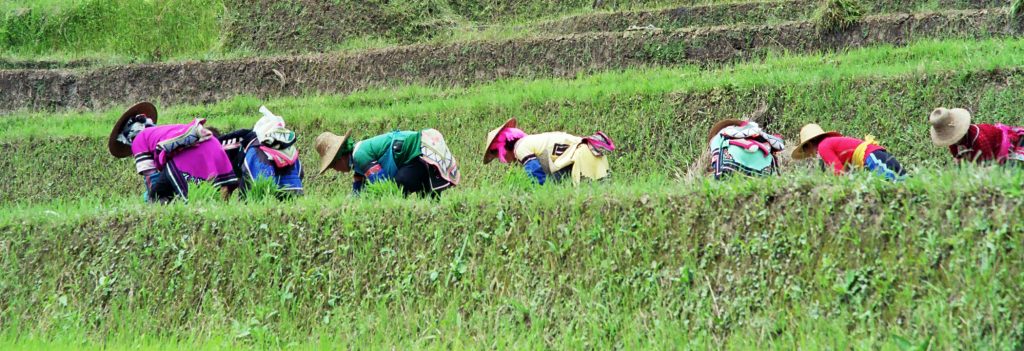
Click here for Jianshui near Laomeng

